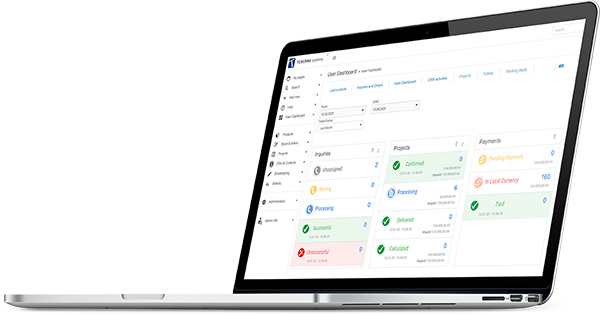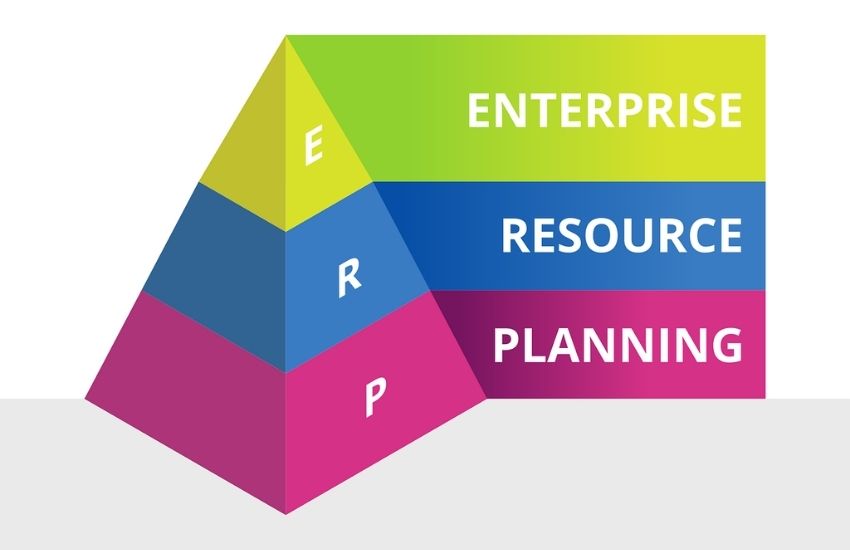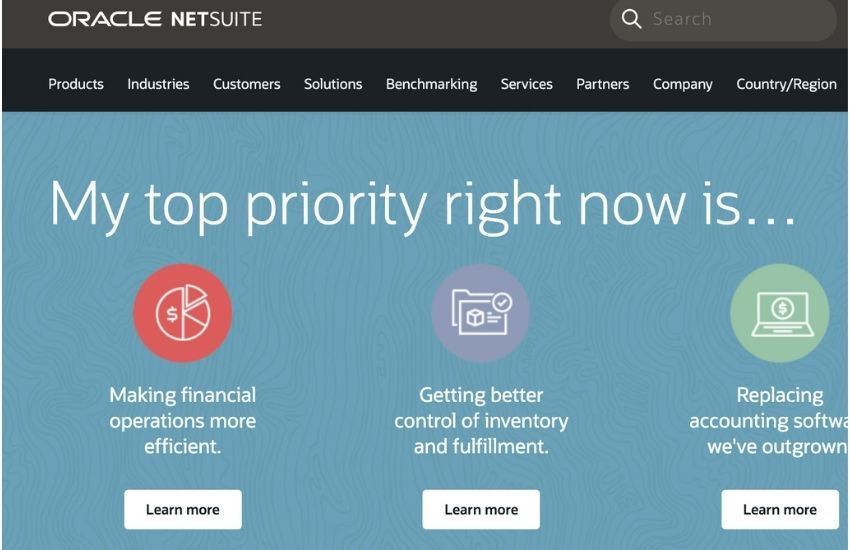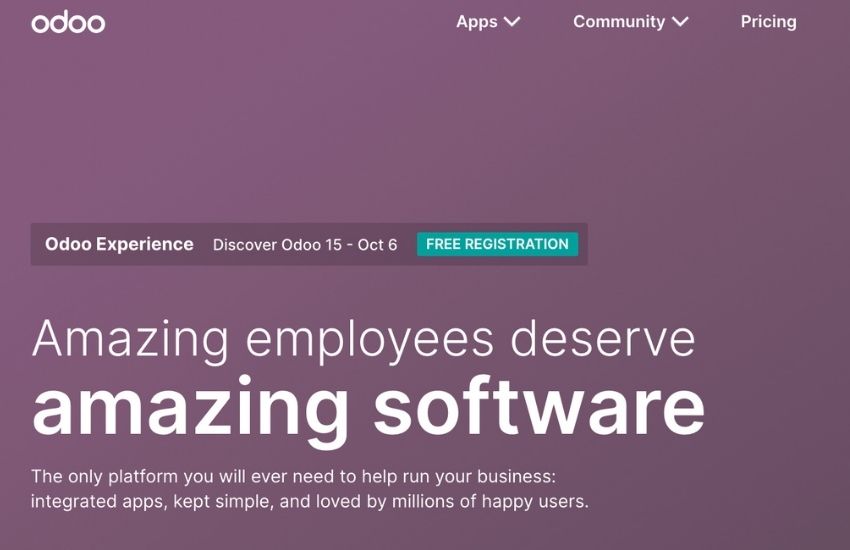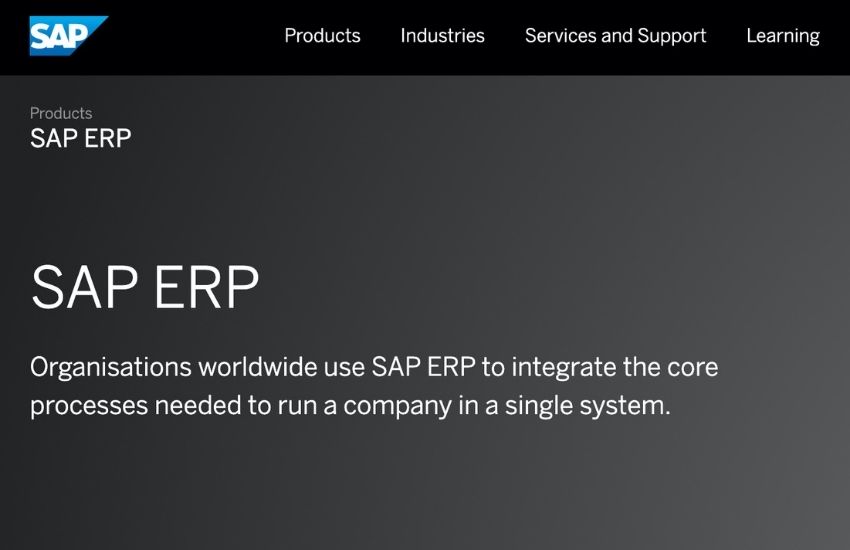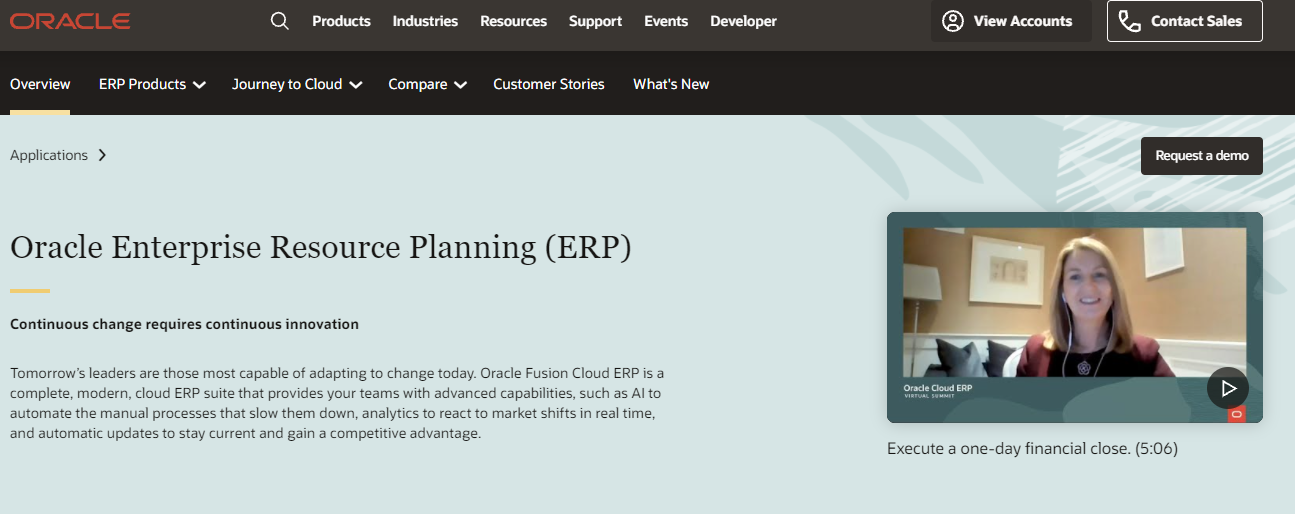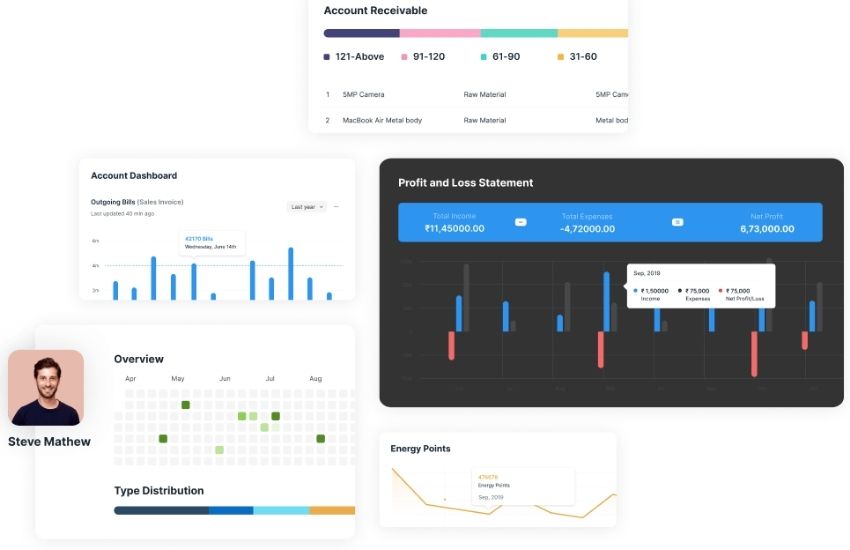It is rare to find a business today with no ERP. From its introduction several years ago, it has evolved to become a core part of any business. The wide adoption of technological solutions across the globe by small and large companies has done a lot to increase the adoption and usage of these systems.
Modern-day ERPs are becoming more sophisticated as vendors increase their functionality, making them more critical to businesses. However, management should be careful when selecting a suitable ERP for their company as one can easily set up the business for success or failure.
With a market full of diverse ERPs with glamorous features, management and business leadership should ask themselves an important question, does this software increase business productivity? It is easy to be blinded by all the features of a potential ERP and forget about why you are getting it in the first place.
This piece will break down all the essential bits you should understand about ERPs to help you find the best one for your business. Read on;
Overview of an ERP
An Enterprise Resource Planning software integrates critical business functions across an organization. It is a networked software that handles transactions and record-keeping of the vital processes of any business-like sales, accounting, human resources, and purchasing, among others.
The history of ERP goes back to the 1960s when J. I Case, a manufacturer of tractors and construction machinery, worked with IBM to develop what is believed to be the first iteration of the MRP (Material Resource Planning). These software were expensive to make and required a dedicated team of experts to maintain them. The first ones helped businesses track inventory and production, enabling manufacturers to acquire raw materials and deliver products to customers efficiently.
The software became popular in the 1970s but was limited to large companies due to the costs and resources needed to maintain them. Eventually, other software companies like Oracle and JD Edwards moved to make MRPs for small companies.
In the ’80s, the MRP II was developed, offering more functions, including manufacturing processes beyond inventory and raw materials procurement. It allowed various departments beyond manufacturing to coordinate and enable managers to do more detailed scheduling.
In 1990, Gartner came up with the word ERP which recognized that more businesses outside the manufacturing space were using this software. At this point, ERPs took their present-day identity; a unified database with information across the company. More inroads were made in this space in the following years, with a notable landmark coming in 1998 when Netsuite came up with the first cloud ERP.
This was a massive improvement over the in-premises ERPs as employees could access business data on any web platform. The cloud solutions paved the way for cheaper ERPs that do not need hardware resources and could be implemented quickly. Gartner introduced ERP II, referring to internet-enabled systems that could consolidate data from multiple sources like front-office applications, like CRP, marketing automation, and Human Capital Management.
An ERP is unique from other business software thanks to its integration capabilities. It has multiple modules that let users interact. For instance, a sales order created on the sales module can be shared with the production module so that workers in the manufacturing plant understand what needs to be made.
The other distinction is that it is the “single source of truth,” i.e., a unified database that records all the data across the modules. This improves data accuracy and prevents users from having to input data from different sources.
Key Features of an ERP System
All the ERP solutions in the market will have a wide array of features, and you should understand the important ones if you wish to land the best. Some of the key features to look out for include;
1. Integration
This is perhaps the most crucial feature of an ERP. It should integrate all the different arms of the business and eliminate any data silos that often lead to inefficiencies caused by different units working at cross purposes. A reliable ERP should give the business a central view of critical financial, operational, and business data used to make business decisions in real-time.
2. Automation
In this highly technological age, any business solution should handle a few tasks and eliminate unnecessary human input. The automation feature reduces the time spent on manual data entry, eliminates errors, and allows workers to focus on more valuable tasks. By design, a top ERP system only requires data to be entered at one point across the entire organization. From here, anyone across the multiple modules can extract and consume it as they deem fit.
3. Data Analysis
Data and not assumptions should always drive business decisions. Most businesses are prioritizing having data as a critical part of all their processes. An ERP system should empower employees with a wide variety of relevant information and change it into actionable insights to improve business operations and customer experience.
ERP systems should have enhanced data analysis functionalities and let users build custom dashboards and extract relevant information required to aid in their day-to-day tasks.
4. Reporting
Reporting is related to data analysis and entails a function where the system can organize data into valuable findings. This is implemented in different ways, such as dashboards, Gantt charts, pie charts, and graphs.
Users should create reports from just about any module in the ERP as it builds towards business intelligence behind any proper business decision. Better reporting empowers the leadership team to identify any problems before they occur and steer the business in the right direction.
5. Financial Management
This feature helps track income and expenses. It is used interchangeably with accounting, and the modules under this feature help businesses make better spending decisions and manage assets. Accounting is often a critical subset of any ERP.
While a standalone accounting system can offer all the features here, an ERP gives a global view of how money flows through the organization and integrates it, especially for huge companies that spend and receive money from multiple sources.
6. Customer Relationship Management
CRM is a module that manages customer data and records interactions with them. The complexity and feature-set under this specific module vary depending on how the business handles customers. CRM features give a birds-eye view of customers and prospects to help the company make more customer-centric decisions. Using a CRM in any business will help identify new customers efficiently and reduce the time and effort required to manage customer information.
7. Sales and Marketing
Sales and marketing help a business get products to the customers, and the responsible module should record important information about how this happens.
In an ERP system, critical sales endpoints can include POS facilities to complete in-person payments and order entry platforms to generate sales orders and communicate customer needs across the organization. With the onset of online selling, an e-commerce checkout platform is integral to complete online sales.
8. Supply Chain Management
This part of an ERP coordinates the activities between retailers, distributors, logistics providers, and suppliers. It supports all the processes that ensure goods and services are availed to customers in a timely fashion. Supply chain features can deal with everything from the start to the end, including demand planning, control, and other supply chain processes.
Types of ERP Systems
There are different types of ERP systems today, depending on the classification criteria used. Some common ones include;
1. Deployment Location
This criterion classifies ERP systems depending on their hosting environment. They can either run “in-premise” in the company’s resident data center or on the cloud on computers maintained by the vendor.
Picking between on-premises and cloud ERP is a significant deciding factor as it determines how you will interact with the system. It affects the features available to you, user-friendliness, cost, and implementation times.
Legacy models of ERPs were designed to be on-premise due to the limited functionality of the cloud at the time. However, a lot of developments in cloud computing have made cloud ERPs the preferred option for many companies. Earlier, cloud-based ERPs could allow limited functionalities, but they can offer similar functionalities to the on-premise versions today.
One major advantage of cloud-based ERPs follows the benefit of cloud computing which is flexibility. Here, a company does not have to invest in its computing resources, as the software provider will handle it. A cloud ERP will therefore be cheaper to buy, deploy and maintain. Understand that not all cloud ERP solutions are equal, and there are a few sub-types.
Multitenant cloud ERPs are the most common, and here, different companies utilize the same resources. The solution is often streamlined with fewer leaner modules as the users share an identical copy of the software. It is cheaper, standardized, and straightforward but has a lot of limitations.
Single-tenant ERPs give the buyer more control over the ERP, allowing them to customize it and align it to their specific needs. The software is used by a single user, making it costlier.
Private cloud and hosted ERP options involve having an on-premise solution hosted on a third party’s data centers. Here, the company using the ERP enjoys a few advantages of sharing computing resources depending on the terms and conditions offered by the third party.
Hybrid ERPs combine on-premise and cloud ERP features to give the best of both. Depending on the software package, some elements of it might be hosted in-house with others in the cloud to provide some level of redundancy in case of failure.
2. Features
One of the common types of ERPs here is the generalist one. Most legacy and cloud ERPs in the market today are generalist as they adapt to processes across industries. They are one-fits-all solutions that users can tweak to meet most industry requirements. However, there are limits to these solutions as the design breadth meant to make them useful across multiple niches sacrifices the functionality depth required by other companies.
Open source ERPs form the minority of the solutions in the market but come in handy for companies that need entry-level solutions. They are perfect for companies with resident technology teams that can work on the ERPs and tweak them to suit their needs.
Vertical ERPs are industry-specific and widely adopted by companies that do not plan to diversify outside their main niches. Their features and customization options are geared to those niches and are easy to implement and use in companies operating in those niches.
Small business ERPs are “lite” versions of full ERPs aimed at small businesses that might not have the resources to implement and utilize full-fledged solutions. Rather than delivering a comprehensive ERP with all modules, these ERPs avail the modules a business needs and offer the option to upscale as the business grows.
The Good and Bad of an ERP System
Advantages of an ERP System
Improves Business Processes and Coordination
This is perhaps the most significant advantage of an ERP. It makes all business processes efficient by linking up all the different parts together.
Users can customize the solution to fit the business’ specific needs. More functions are automated, which reduces friction between departments and allows for better collaboration. In addition, employees can access the data they need from different teams, which informs their day-to-day activities and provides a basis for better decision-making.
Better Productivity
Besides seamless access to business data, employees can leverage some of the ERP features to follow up on tasks and focus on high-value actions that enhance productivity. With the eliminated friction between the departments, employees do not have to waste time looking for information, as they can get it from the click of a button.
This way, processes and tasks that took more days can be executed faster, free up employee schedules, and make them more proactive. An ERP reduces unnecessary paperwork and manual data entry, reducing human errors that disrupt processes and affect productivity.
Better Management
Managers and business leaders can benefit from an ERP thanks to the enhanced visibility that gives them a view of various business projects.
The linkage between various departments allows them to collaborate with other managers and team up quickly to provide direction to their juniors on how best to tackle specific projects. They can quickly identify repetitive and wasteful tasks and eliminate them from the pipeline to help other employees focus on the most valuable ones.
Improved Data Quality and Analytics
An ERP only requires data to be entered at one point, making the information consumed by various employees across the business credible and coherent.
Rather than gathering data about a single item from multiple systems and checking to see which one is accurate, and ERP offers the “single source of truth.” Technicians can configure the system to gather first-hand data and trickle this through the system to allow any interested parties in the business to consume it.
A consequence of top quality data is better analytics which culminates in improved business intelligence. Analysts in the business can derive accurate insights from this data and advise their stakeholders better. ERP software can automate some analysis and allow people in various business sections to derive insights through custom dashboards and graphs on the fly.
Competitive Advantage
A top-quality ERP system can be the difference between one business and the competition. It has a significant impact on internal and external business operations and can help a business widen the gap between them and the competition. A highly customized one will eliminate a lot of manual work within the business, offer employees a platform to perform well, and allow everyone to focus on their core competency.
Disadvantages of an ERP System
Skill Gaps
An ERP is only as good as the people using it. Most ERPs are made using modern-day technology, and businesses with people lacking the skills needed to utilize this software can be a downside for the business. Inadequate skills can lead to mishandling of the software, bottlenecks, and even inefficiencies in some business processes.
As a result, the cost and implementation of ERP software should include comprehensive training to bring employees up to speed with the software and how best they can use it. Like any computer system, an ERP operates on the GIGO model, and unskilled employees can make it work against the business.
Limited Customization Options
Many businesses are cash-strapped and cannot afford to customize an ERP solution to meet their needs entirely. The solutions available in the market are cheaper, and the limited budget can force a business to tweak some of its processes for the ERP to work for them. Besides, the business world is changing, and companies have to be agile and adaptive to change, which can quickly render an ERP out of sync with the business goals and mission.
Costs
The best ERP systems cost a lot of money and might not make sense for most businesses financially. That said, there are additional installation, purchasing computing resources, maintenance, and training costs. Companies must take all these costs into account and weigh them against the benefits to determine if it is feasible for them or not. While there are options for SaaS solutions where the vendor takes care of the computing resources, training remains a concern.
How To Choose the Right ERP System
With multiple ERP solutions today, it is essential to follow a systematic procedure to fish the best one for your business. Here are the steps;
1. Review and Establish the Business Need
Notwithstanding all the fantastic things an ERP can do for your business, there is no guarantee. Not all companies need an ERP.
This is why you should initiate an internal review process to define the processes and pain points that an ERP can address. This analysis should include the current state of affairs and what the ERP will do to take things to a future state of affairs. You will use these details in the following steps to illustrate the kind of solution you seek from vendors.
2. Assess the Technical Requirements
While an ERP is a business initiative, it is highly technical and ensures that it fits your current technological landscape.
Look at how the potential solutions align with your current systems since you do not want one that will force you to change everything. The best ERP should seamlessly sit in your technological landscape without disrupting the existing systems in a huge way.
3. Understand the Costs
Cost is a critical determining factor when choosing an ERP and forecast this. Do not focus on the price of a potential solution but all the associated costs.
It is advisable to map this to the benefits this solution will bring the business and how long it will take to break even. Uncover hidden costs such as hiring new people to manage the solution, regular maintenance checks, and hardware upgrade costs.
4. Map the Implementation Plan
An ERP software cannot be set up and start running on the same day, and the implementation will take a toll on existing business processes. Understand that you cannot put the business at a standstill to install the ERP and have a soft handover plan to put the system in place without disrupting the business activities.
Be realistic with the plan and give enough time to install, test, train, and configure the solution to make it acceptable. It would be best to map out this timeframe in advance to provide the business with a clear picture of the commitment needed to make the plan a reality.
5. Track Benefits
An ERP will benefit your business, but always have metrics in place to measure this. You should quantify all the benefits to help you analyze in the future and see if the solution is living up to expectations or not.
6. Be Open-Minded
When shopping for an ERP system, you will always lean towards a few options based on what you have heard or what has worked for another business. However, business cases are different, and what a competitor is using might not be ideal for you.
All companies anticipate different benefits from an ERP, have diverse technical landscapes, and spend different amounts on the solution. This way, do not heavily lean towards specific options because of hearsay and go by the documented facts to land a suitable choice for your business.
Top 7 ERP Solutions
1. Oracle NetSuite
Established in 1999, Netsuite is one of the first cloud-deployed software solutions. It was acquired by Oracle in 2016 but continues to market its ERP to small and mid-sized businesses under the OneWorld moniker. This solution is purely sold through a partner/reseller channel starting at $999 per month for base access.
The dashboard looks complex initially, but one can work with a reseller to build an individual workflow for your needs. The SuiteFlow Workflow Manager is specifically designed for this purpose.
Key Features
• Impressive CRM features
• Vast enterprise planning abilities that apply to multiple niches
• Simple reporting features
• Highly customizable process workflows
2. Odoo ERP
This is one of the popular open-source ERP solutions. It is customizable, fully integrated, and has expertly designed functions. It has a wide variety of applications, at an extra cost, to include functions such as helpdesks, timesheets, website builders, inventory, marketing, and more.
Since it is open-source, it handles customization and integration well, as long as you have a team of software developers to leverage all these features. Odoo lets users buy a customer support pack, where you purchase hours that can redeem them in the form of assistance, troubleshooting, and communication. The solution integrates multiple third-party apps such as Shopify, Amazon, eShipper, Magento, among others.
Key Features
• Open-source solution
• Freedom to select your hosting type
• Ideal for automating and tracking critical business activities
3. SAP ERP Software
SAP is an acronym for System Application Programming, a unit established in 1972 by five members of IBM. SAP has grown to become a leading software company, and so is its ERP, which has a plethora of applications to help business operations.
This is a one-size-fits-all solution for all kinds of businesses. However, it is one of the most expensive solutions, making it more suitable for larger enterprises. It offers integrated and customized solutions with customer partners to allow companies to pay for the modules they need.
Key Features
• Designed to streamline business processes from multiple sources of data
• Improves collaboration and eliminates redundant systems through an integrated solution
4. Microsoft Dynamics 365
This is an ideal option for businesses that use the Office 365 productivity suite. It has a familiar feel with most of the other office software and can import and export data, giving users a seamless experience.
Like Office 365, businesses can choose a scaled-up version of the software to meet their business needs and budget. A limitation is that the solution can be slow on older computers and has limited integration options compared to other solutions in the market. Users might be required to install multiple third-party applications to conduct deeper analytics and get more functions.
This solution costs $65 per user per month for one module and $20 for any additional one.
Key Features
• Close integration to Office 365
• Lacks comprehensive CRM, HR, and management features
• Only available in the US and Canada
5. Oracle ERP Cloud
This ERP offers a mix and match solution for multiple business units such as procurement, project management, financials, supply chain, and manufacturing, among others. It is well known for deep analytics that helps drive business intelligence.
Oracle ERP cloud has robust reporting features, including KPI management, a library of best practices, analytics models, and self-service data hubs. Most analytics features are in the cloud, but one can access more from their Analytics package.
Like other Oracle solutions, Oracle ERP cloud requires a lot of training as getting used to the interface can be challenging, especially for non-tech savvy users. It integrates well with multiple third-party solutions like PayPal, Shopify, Salesforce, Box, Microsoft, and Google Platforms.
It costs $175 per user per month.
Key features
• Best in analytics and reporting
• Cloud-based solution
• Easily scalable across businesses of different sizes
6. ERPNext
This free, open-source ERP software is ideal for small and mid-size businesses with a shoestring budget looking to leverage a few features. It is available in more than 70 languages, has applications for smart devices, and users can get personalized training if they choose a paid plan.
Companies that use this solution can track customers, create loyalty programs, and schedule meetings. Support options are limited, but users can check out a collection of over 300 videos to help them get accustomed to the system.
The free modules are easy to set up and run, as expected from a typical freeware ERP solution.
Paid plans with managed hosting and enhanced features cost from $10 a site per month.
Key Features
• Free and open-source solution
• Easy to set up and run
• Lacks robust features making it suitable for basic functionalities
FAQs
Question: What should I look for in an ERP system?
Answer: An ERP solution will be used across the business and ensure that you do the necessary due diligence before selecting one. One key thing to look at is scalability and flexibility since your business won’t remain the same, and needs will change. This feature will keep the solution relevant regardless of changing times.
Other vital factors to consider include support for mobile users, customer recommendations and long-term costs, and ease of use. In a nutshell, an ideal ERP solution should fit your specific needs.
Question: How are ERP and e-commerce connected?
Answer: ERP is not related to eCommerce, but they can work together to give a business significant advantages. E-commerce is based on online systems that can be integrated into your ERP to unify all data sources and ensure that all interactions with customers and partners are recorded for better analytics and insights.
Question: What is the future of ERPs?
Answer: It is not easy to predict the future, but data will become a central part of any ERP system if present-day trends are anything to go by. The increased uptake of AI and mobile app development services has put data at the center of any decision, primarily sourced from ERPs. In addition, ERP solutions will be more intelligent, leveraging on Machine Learning and Artificial Intelligence models, to conduct near-accurate predictions and derive better insights.
Bottomline
An ERP solution is central to any business’s success and is hard to operate without one in such a digitized era. It has its fair share of advantages and disadvantages but, the pros overshadow the cons making it a desirable solution for any company.
A top one will cost some significant amount, and any business should be ready to meet this cost to enjoy the wide variety of features and other perks. However, do not waste this hard-earned money and take time to scan through the options and land a suitable one.
Read More:


